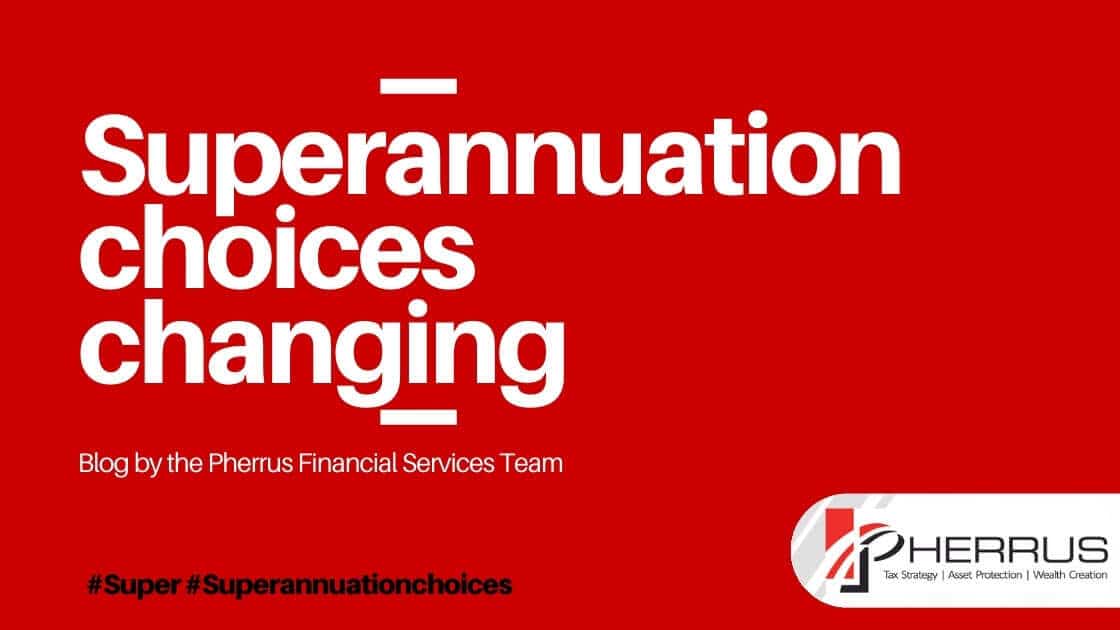From November 1st 2021, employers will need to complete a different procedure for new employees when it comes to superannuation.
The current situation is that if an employee doesn’t stipulate which superannuation fund they would like contributions made to, employers can assign them to a default superannuation fund.
As a result, some employees “collect” several super funds as they move from job to job.
As admin charges are applied to every super fund, some employees end up spending large chunks of their contributions on charges, rather than accruing capital.
The new superannuation choice legislation includes a number of measures intended to make superannuation funds more attractive for users.
Alongside superannuation choice changes that ensure an employer has to check for details of a stapled super fund, other alterations under the new legislation include an increased duty for super fund trustees to act to the benefit of fund beneficiaries, super fund under performance assessments (conducted by APRA) and the creation of a super fund comparison service.
What is a stapled super fund?
A stapled super fund is a single superannuation fund that an employee (and an employer) pays into for the duration of the employee’s working life.
As the employee changes jobs, their chosen superannuation fund is “stapled” to them. This means the details of the fund remain constant.
What does the new process entail?
When new employees start with an organisation after 1st November 2021, the employer is required to check if they have given the details of their preferred superannuation fund as part of the paperwork they completed prior to commencing employment.
If the new employee hasn’t given details of their superannuation fund, the employer is required to contact ATO (Australian Tax Office) to see if the employee has a stapled super fund.
If the employee does have a stapled super fund (details of which will be held by ATO), the employer is required to pay superannuation contributions into the stapled fund, rather than a default super fund that the employer may have previously used for new employees who didn’t give any fund details.
Conversely, if the employee has submitted details of a super fund that they wish the employer to make contributions to, the employer should use that, rather than any default option they might have previously used routinely.
Can ATO be contacted remotely to confirm details of a staples super fund?
In a word, yes! In the first instance, the new employer will need to submit a single touch payroll event and/or a tax file declaration number.
Once these transactions have been processed, ATO will have the necessary information to link a stapled super fund with the new employee.
The process to discover details of a stapled super fund is as follows:
- Employers will need to log into the ATO’s online services.
- Input the employee’s Tax File Number (TFN). If you don’t have this, there is an alternative way of accessing the required information, but it’s more long-winded.
- The full name of the employee (including any previous names).
- The full postal address of the employee if you don’t have TFN details.
Once ATO has this information, they will process the request and the stapled super fund’s details will usually be provided in just a few minutes.
The employee will also be informed that a request has been made to ATO for details of their super fund, along with a copy of the information that ATO will have given the new employer.
What if my employee hasn’t completed a superannuation choice form?
In most cases, an employee should be provided with a superannuation choice form (the form on which they give details of their stapled super fund or another super fund they’d like their employer to pay into), within twenty-eight days of starting employment.
If the employee has stipulated a super fund on their superannuation choice form, the employer needs to pay into it.
Where a new employee hasn’t stipulated a super fund, or don’t meet the criteria for a superannuation choice form, from 1st November 2021, employers will need to contact ATO for details of any stapled super fund the employee may have.
If the employee has a stapled super fund, even if they haven’t completed the superannuation choice form, employer contributions should be paid into it.
When a new employee hasn’t stipulated a super fund and has no stapled super fund, employer super contributions can be made to a default fund.
This new way of ascertaining which super fund employer contributions need to be paid applies to all new employees with a start date on or after 1st November 2021.
Note that penalties may be applied if this procedure isn’t followed, so it’s important to get it right for each new employee.
If you’re an employer who has questions about this process (for example, what happens if an employer has two stapled super funds), Pherrus is here to help.
As an experienced group of accountants, we can answer all your super fund queries, as well as any other questions you may have relating to employee tax law and/or procedures.
Call now to speak with a friendly, helpful member of the Pherrus team.




